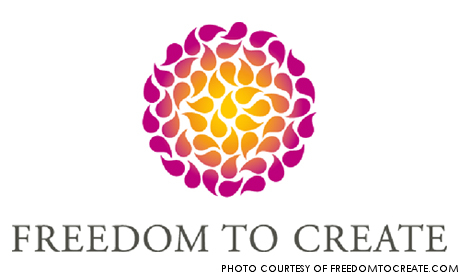

According to an article by Thought Clusters, one of the seven aspects of intelligence is the ability to imagine and be creative. Peter Gray, author and doctor, says that “creativity is nurtured by freedom and stifled by the continuous monitoring, evaluation, adult-direction, and pressure to conform that restrict children’s lives today.”
Our school and education could benefit greatly from Gray’s ideas. The more creativity allowed in schools, the more imaginative children will become, which will result in original ideas. Having new ideas will lower the chance that students will feel like they have to plagiarize from others in order to do well.
By stifling creativity in schools, educational facilities hurt the chances that children will be more original in their future endeavors. Children must be exposed to all the creative avenues they can while they are young so they can unlock their full imaginative potential.
Having all of this creative potential will enable children to eventually solve anything they set their minds to, as the unique approach is often the best approach, as few if any have tried it before. Without creativity, people don’t succeed nearly as often, as they try to approach problems with a “tried and true” approach that will fail for them as it has for many others.
For example, in the story of The Tortoise and the Hare, the hare takes the traditional approach of being cocky and rushing quickly out and failing. The tortoise, on the other hand, takes the more unique approach of pacing himself out of the gate and taking his time, which results in his success.
Gray’s assertion that “In the real world few questions have one right answer, few problems have one right solution; [and] that’s why creativity is crucial to success in the real world,” applies to schools as well. Almost every class, besides math,questions can have more than one answer, and even some math questions can.
By applying their creativity and critically thinking about questions, students use the upper levels of Bloom’s Taxonomy. These levels are analysis, synthesis and evaluation, which are commonly used in questions featured in AP/Honors classes. Analysis consists of separating material and understanding it in pieces. Synthesis is bringing different parts of something together in order to understand it and evaluation is making a judgment about the value of an idea or material.
Gray also states that our current system punishes children and teachers for trying different routes or ways to solve problems. Trying different ways to solve problems shows imagination and creativity, necessary skills for success later in life. Some people are not going to use the math that they learn in middle school and high school later in life, but this creativity and imagination will stay with them forever.
Forcing students to do something one way causes them all to conform to what is considered the “norm,” a very unhealthy version of what students should be. The main way students are punished for trying different routes is in math classes. For example, in my calculus class, using methods that aren’t explicitly calculus is not allowed, even if they work and result in the right answer.
The reason only one way of doing a problem is accepted is to keep all of the tests roughly the same to grade. While allowing students to answer questions in other ways would result in more work for the teacher, nurturing future generations is more important than a little extra time spent grading.
While creativity in school is a great thing, students also need it for outside activities, such as clubs and sports, as well as the job that they will someday hopefully have. Clubs are a great way to bring a community of people interested in the same subject together, and the meetings enable students to discuss their interests in a private setting with friends.
Clubs also offer additional benefits besides creative nurturing, such as leadership opportunities. Opportunities to lead other students can increase their confidence, as well as allow them to unlock the other aspects of their personality that might be more useful in the workplace, such as teamwork.
Sports are also a great source of teamwork and leadership building, and are more than just a physical workout. The mental facet of sports combines with the creativity necessary to play the game, which together can help the student-athlete in class.
The idea of having the freedom of creativity has spread throughout the world and an organization called “Freedom to Create,” which was established in 2006, serves to “unleash people’s creativity.” They do this by providing an “enabling environment” where they can free their imaginations and fulfill their desire to innovate, in an attempt to drive society forward.
Freedom to Create tends to focus on places where creative freedom is inhibited by “political repression, intolerance, ignorance and religious extremism.” In the developed world, people typically take their freedom as granted, but others countries aren’t as lucky.
The freedom to create is necessary so the future can have people who are both builders and caretakers of peace and prosperity for years to come. Builders of the freedom to create are the people and students who express their creativity through the use of unique approaches to peace and prosperity. Caretakers, on the other hand, are the people who enable students to unlock this ability, such as teachers, parents and coaches.
Together these caretakers and builders will educate future generations, as well as work in tandem to guarantee the freedoms, the peace and the prosperity we take for granted. It isn’t enough, however, for these people to just guarantee all of these positives in the developed world.
It is also necessary for them to go out into other underdeveloped countries where people are inhibited or repressed. Once there, builders and caretakers together will try to build the “enabling environment” stressed in the “Freedom to Create” agenda.
One day the entire world will be an enabling environment full of builders and caretakers of the freedom to create that will work together to preserve this concept forever.
[…] to this article, however, creativity is being stifled these days like never before. Children typically spend […]